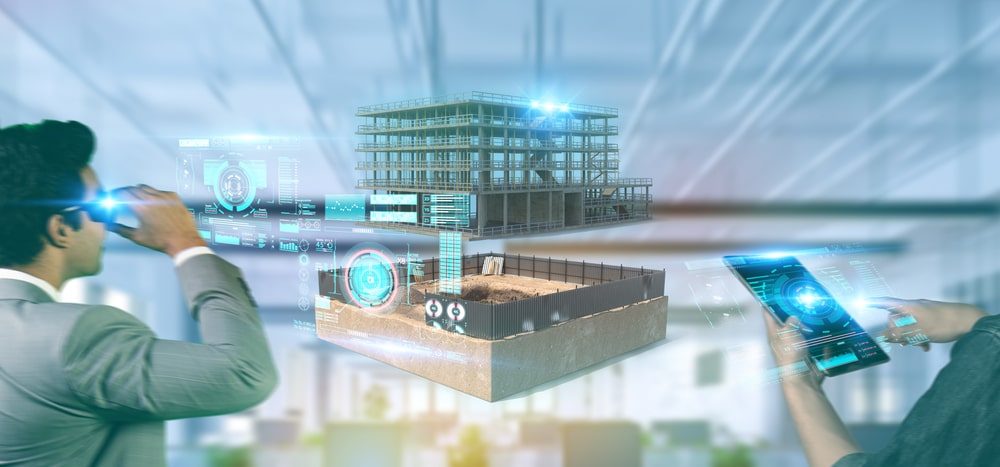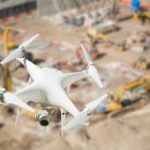News - Construction News
Addressing the climate crisis through digital twins

The end of 2021 saw representatives from over 200 countries gather in Glasgow for the much-anticipated COP26 conference. The summit focused on the big policy pledges aimed at addressing climate change and promoting sustainability, but now the real challenge begins. While there were some promising developments, reaching these targets will take real commitment and action from the entire construction sector, otherwise, COP26 is at risk of being perceived as greenwashing.
It’s safe to say that climate change and sustainability have become two of the most important challenges facing any business in 2022. Sustainability has become much more than just a buzzword: there is now a greater focus on environmental reporting, sustainability strategies, and a demand for full disclosure by law on the impact that a business has on the environment.
The built environment and infrastructure contributes to approximately 40% of the UK’s total carbon footprint, half of which comes from the energy output of buildings. Facilities managers and asset owners, therefore, have a critical role to play in meeting and reporting on sustainability measures such as utility performance, waste management and recycling practices in order to reduce a building’s environmental impact. Digitisation of the sector has become a huge enabler in helping it to streamline its practices and reach corporate sustainability goals.
One of the biggest technologies disrupting the sector is advanced digital twins that provide visual intelligence, and these will continue to become a major player in the coming years. So, what is it and how can it help the built environment sector reach its sustainability targets?
Linda Wade, CEO and Co-Founder of Spinview, talks to Construction Online about the value of visually intelligent immersive technology and how it can progress COP26 goals for sustainability in 2022.
The Visual Intelligence Ecosystem
Visual Intelligence (VQ) combines many streams of data, some traditional, some volumetric, with immersive technology, so that anyone working on a project or building can transform data into understanding and insights.
Cutting edge technologies, such as digital twins and environmental scanners or ‘sniffers’ enable both the capture, measurement and communication of large volumes of seemingly disparate data – unlocking the value of that data by turning it into meaningful and actionable information.
And, with this information visualized on web browsers or handheld devices, the information is accessible to all – from asset managers, architects, surveyors as well as non-technical users. The VQecosystem, therefore, allows all parties to gain a holistic view of a space, meaning they are aware of the overall impact a building has on the environment and can work together to reduce or neutralize any negative impact.
Visual intelligence unlocks the full value of all the data related to a building, allowing asset managers to ‘see’ the full health of a space and identify where effective sustainable measures can be integrated e.g. to help reduce carbon emissions. When armed with the right digital tools, managers can make the best possible decisions, ensuring they are working towards achieving sustainability goals and building efficiencies. So what are these ‘digital tools’?
Digital Twins: A data-driven approach to sustainability
We expect to see digital twins become ingrained in the design, development and management of built environment assets. This is because digital twins can combine all the data from a real-world environment and replicate it digitally with a computerised version of that environment, infrastructure, or space.
With this powerful digital twin technology, the sector can identify ways to deliver more sustainable, safer and smarter environments and help address sustainability challenges. According to a recent report, digital twin technology can help reduce carbon emissions by 50-100% within buildings, as well as reducing operating costs by 35% and boosting productivity and efficiency by 20%, making immersive technology fundamental in the fight against climate change.
Establishing a baseline: The key to reducing carbon emissions
Importantly, while organisations have committed to reducing their carbon emissions, many do not know that they are currently underachieving on these targets on a day to day basis. Without a way of accurately measuring and reporting on current carbon emissions, it is impossible to set meaningful goals and track progress. With a digital twin and the latest in scanning and ‘sniffing’ devices, businesses can accurately understand and measure their baseline.
A reliable baseline offers reliable data that can provide recordings of pollutants and other environmental impacts from which to set sustainable targets and effectively report them. Once an accurate baseline is established and measured against regularly, a digital twin can project a realistic representation of the past and present state of a space. This information can also be utilised to forecast or predict scenarios with assets, environments and even whole cities.
Going beyond the human eye
Accessing volumetric data is important, but comprehending that data and making it accessible is the key. Digital twins, with the right data feeds, can make the “invisible realm” visible.
This is made possible with Light Detection and Ranging technology (LiDaR), thermal and hyperspectral imaging, and an assortment of other advanced sensors which measure pollutants, VOCs and greenhouse gases. The technologies capture what is invisible to the human eye yet impact the health of a building and its inhabitants. This enables the tracking and extracting of value from that data to better understand the environment in a richer, deeper and more actionable way.
In summary, if we are to see real progress in the fight against climate change, the built environment sector must embrace technology that unlocks the value of data – such as digital twins and LiDAR – and adapt the way it operates to reduce carbon emissions. With technology that delivers visual intelligence, the sector can understand and action vast amounts of environmental data needed to alter and better behaviours in order to address the climate crisis. Time is of the essence – the built environment must act now before it is too late.
If you would like to read more stories like this, then please click here
Related Articles
More News
- €500Bn German infrastructure fund could benefit British businesses
8 Jul 25
€300bn of the fund is earmarked for the modernisation of Germany’s transport infrastructure.
- Level 7 apprenticeship funding cuts will cost building companies millions in increased training costs
7 Jul 25
The government’s decision to cut levy funding of Level 7 apprenticeships will cost UK employers.
- New National Housing Bank
4 Jul 25
Hundreds of thousands of extra homes will be delivered thanks to a bold new government-backed






